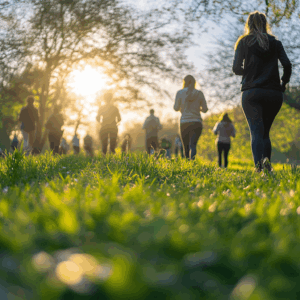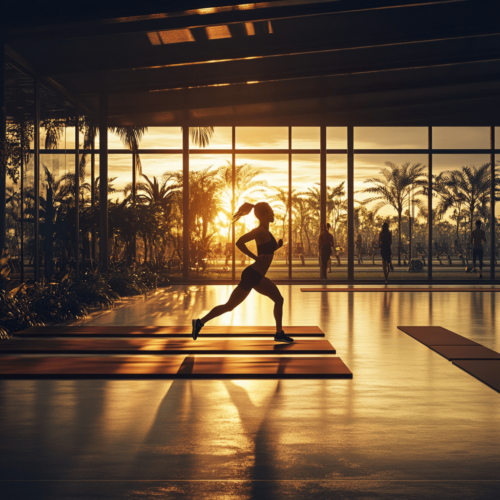The weather is warming up, the days are getting longer, and now is the perfect time to reset your routine with some fresh spring fitness tips. Movement is essential for your health and longevity. It doesn’t matter if you are an athlete, a weekend warrior, or simply wanting to add more physical activity to your routine. There are so many ways to add movement to your daily routine and boost how you feel, look, and live.
At Alliance Chiropractic, we work with patients at every age and stage of life. Our focus is on helping you feel your best, avoid injury, and stay active—no matter what fitness looks like for you.
Age is a Number- Keep Moving
There’s a saying that ‘motion is lotion’. Why? Because regular movement supports every system in your body. Here are some of the benefits of physical activity:
- Boosts energy levels
- Improves mood
- Supports heart health
- Lowers blood pressure
- Strengthens bones and joints
- Improves sleep quality
- Reduce Mind Fog
- Reduces risk of chronic diseases
- Helps maintain a healthy weight
- Strengthens social connections (if done with others)
And you do not have to be running marathons to enjoy these benefits. The key is being consistent – find activities that you enjoy that work for your schedule.
Spring Into Motion With These Spring Fitness Tips
Adding more movement into your daily routine is simple. Here are a few practical ways to move more this spring:
- Take the stairs instead of the elevator
- Park farther away when running errands
- Spend time in your garden – lifting, squatting, and pulling are all great movements
- Join a local walking group or try a hike on one of Hamilton’s amazing trails
- Stretch while watching TV or during work breaks
- Walk your dog (or offer to walk a neighbour’s)
- Try outdoor bodyweight exercises like squats, lunges, or resistance band activities.
We have some amazing trails and parks in our region. Need some inspiration? Check out our previous blog on the benefits of hiking and some of our favourite local spots in the Greater Hamilton Area.
Move Your Way – Physical Activity that Fits YOU
There is no one-size-fits-all when it comes to movement. Whether it is dancing in your living room, walking the dog, exploring a forest trail, or playing your favourite weekend sport, physical activity should feel natural and enjoyable. The key is to choose what fits your life, your energy, and your interests.
Here are a few ways to think about adding more movement into your day based on your current status:
- Getting started? Begin with small steps. Try daily walks or gentle stretches to get your body moving. As you start to feel more comfortable, you can build up the time or intensity little by little.
- Active on weekends but want more during the week? Add in light activity throughout your weekdays—this could be a short yoga session in the morning, a brisk walk during lunch, or some movement while watching TV. Keeping it simple and regular can make a big difference.
- Already working out regularly? You might enjoy extra benefits by adding mobility work, cross-training, or recovery-focused movement like stretching, foam rolling, or gentle Pilates. These can help prevent injury and improve how you feel during your main workouts.
No matter your starting point, movement should bring energy to your day—not stress. Try different things and see what makes your body and mind feel their best.
How Chiropractic Care Supports an Active Lifestyle
Your bones, joints, muscles, and nervous system comprise your neuromusculoskeletal system and work together to enable healthy movement and function. Chiropractic care aims to keep your entire system and each component functioning properly so you can stay mobile, injury-free, and performing at your optimal level.
At Alliance Chiropractic, we do not use a one size fits all approach. Our customized treatment plans are based on patients’ individual goals and needs, and strive to:
- Improve spinal alignment for better posture and performance
- Reduce muscle tension and joint stiffness
- Address movement imbalances that can lead to injury
- Prevent re-injury by supporting proper mechanics and recovery
- Customize treatment for your unique goals and activity level
Whether you are lifting weights, hiking the trails, or keeping up with your kids in the yard, our team is here to help you move safely and confidently.
Final Thoughts: Movement is Medicine
You do not need a gym membership or hours of free time to build healthier routines. Small changes such as taking the stairs or going for a post-dinner walk, can all add up and provide big benefits over time.
Spring is the perfect opportunity to add daily movement to your routine with longer days and warmer temperatures. The key is consistency and finding what feels good for you. If pain, stiffness, or old injuries are holding you back or you need some support getting started, we can help.
Contact us if you have any questions regarding this blog or any other health or wellness concern.
Want to stay updated on health information? Subscribe to our quarterly newsletter here.
Information for this blog was sourced from: How Chiropractic Care can Enhance and Support Athletes of all Ages and Levels , and Hit the Trails: Enjoy the Health Benefits of Hiking



